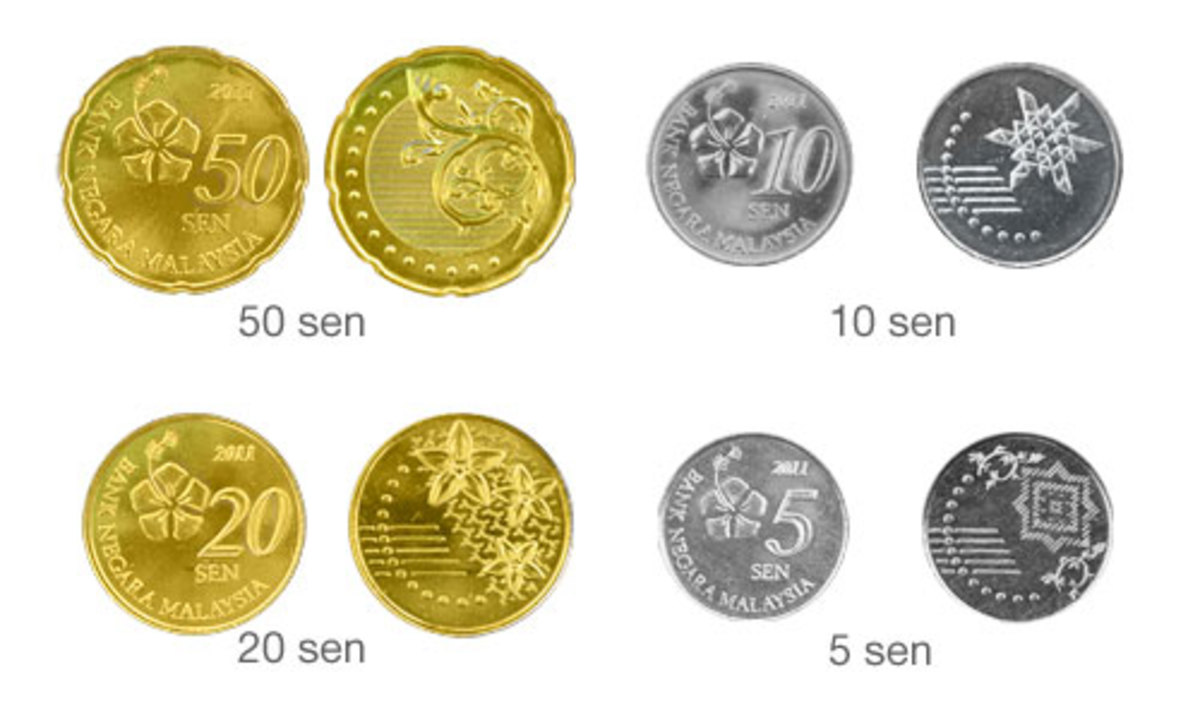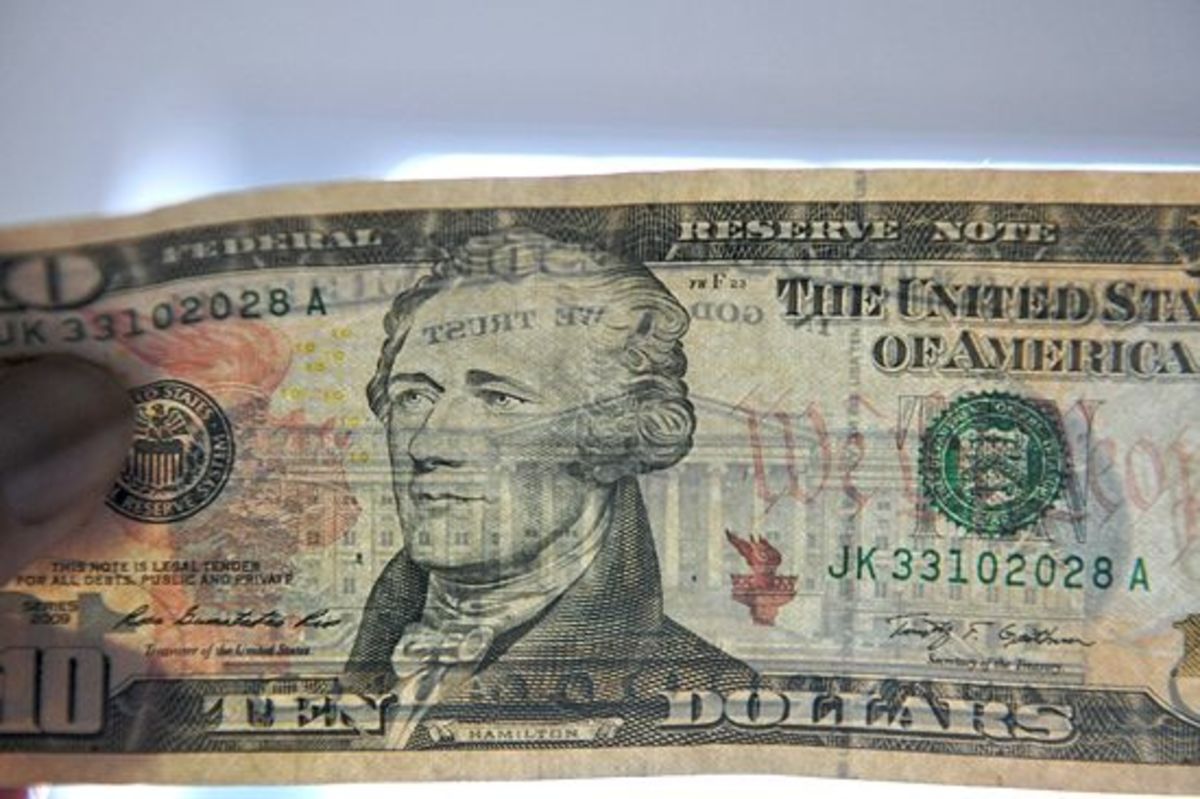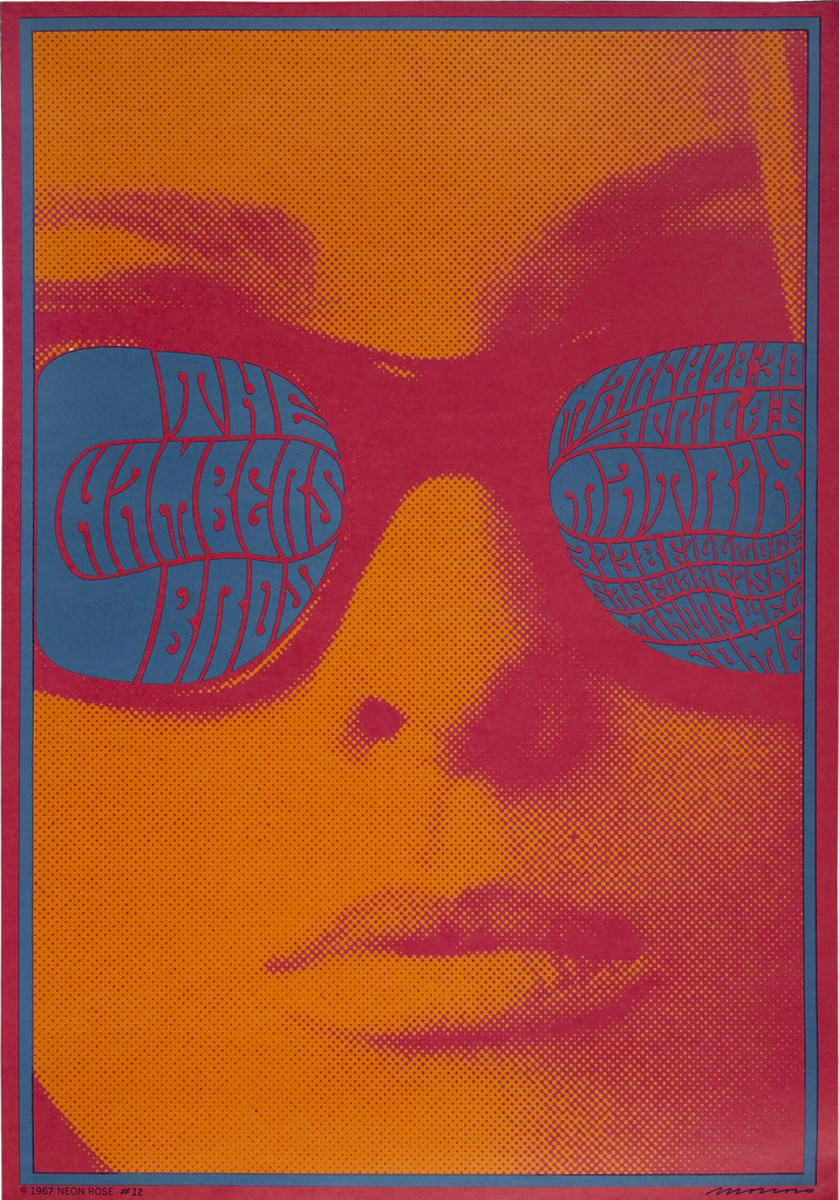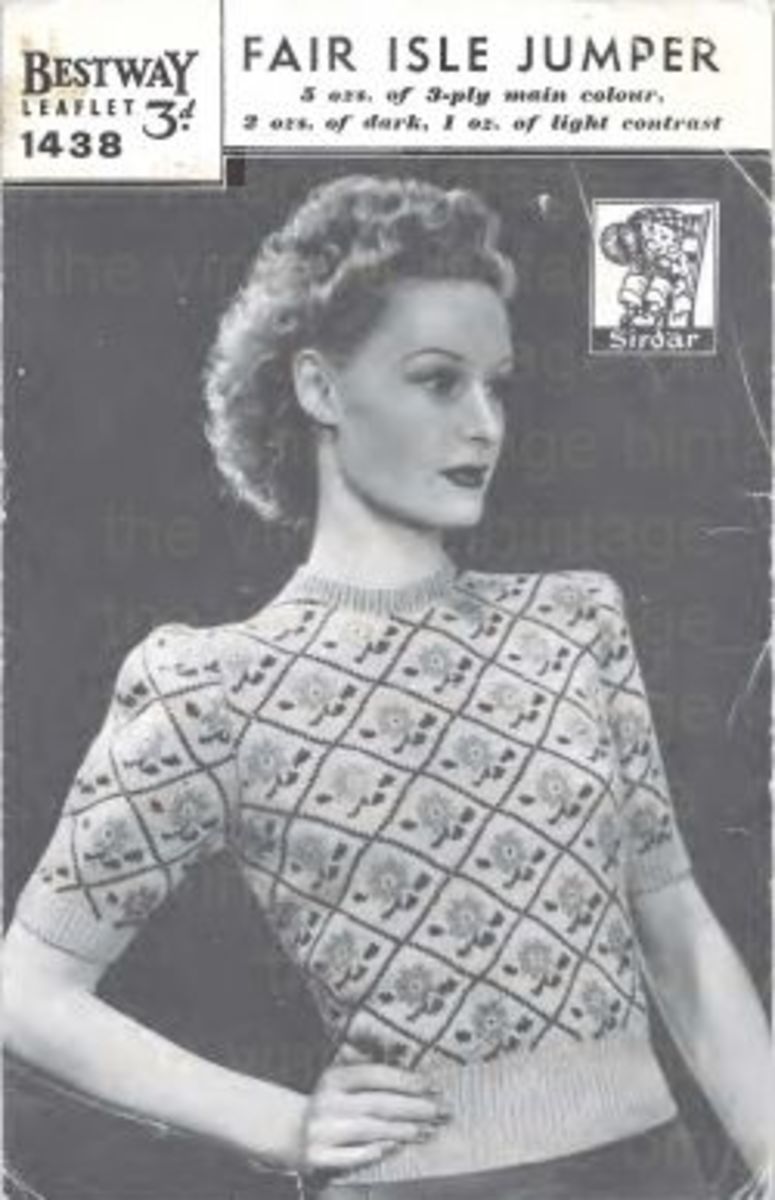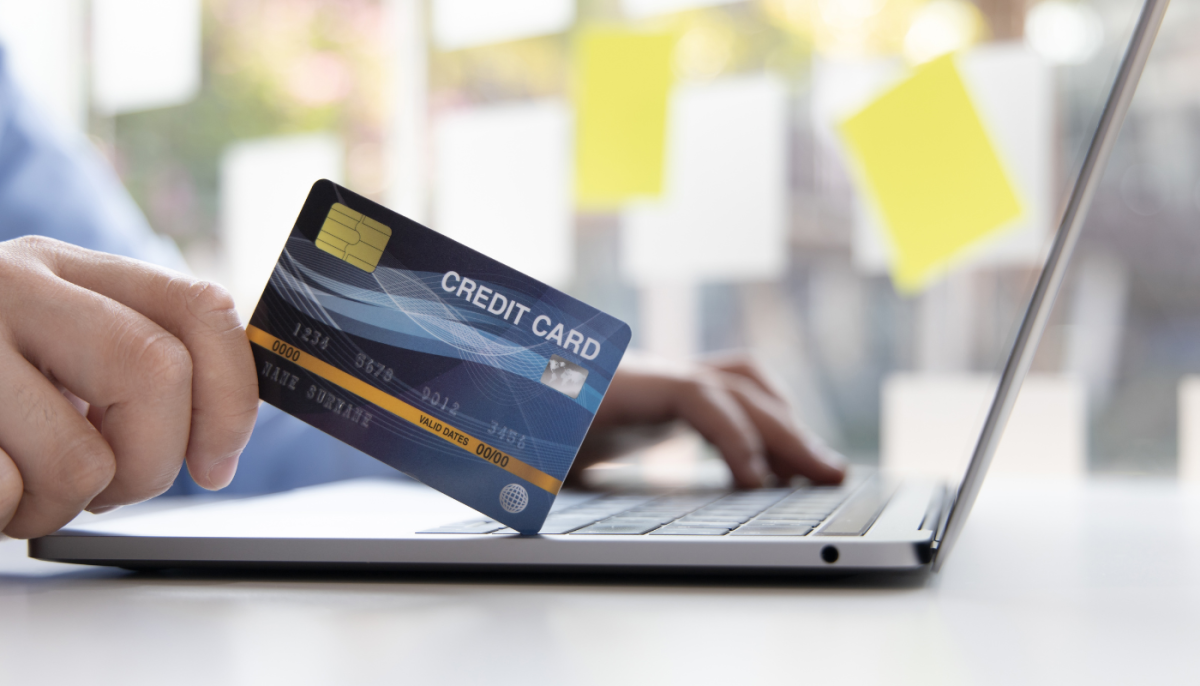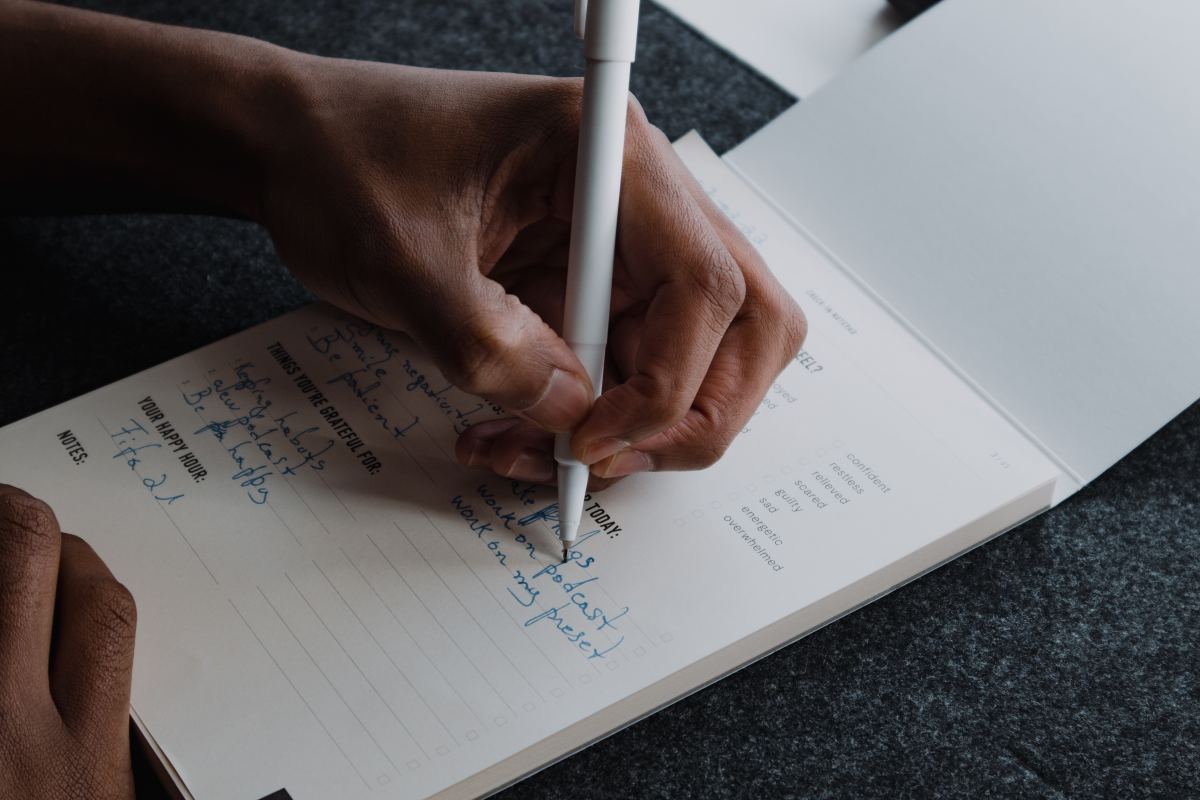How to Detect Counterfeit Currency
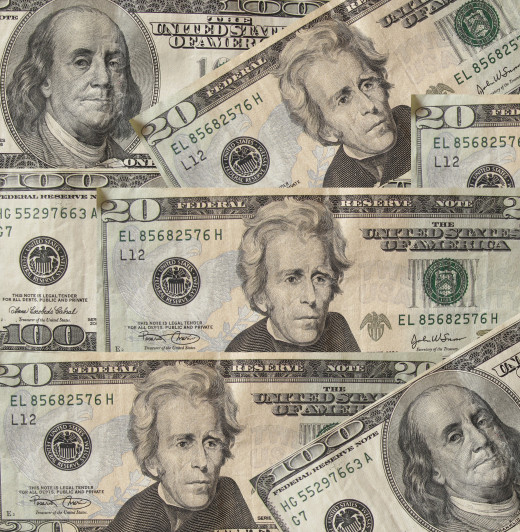
As an ex-bank teller, the majority of my job relied around protecting my customers and their money. One of the most common inquiries from my clients was "how can you tell that the money is real?" I'll let you in on a few secrets from the other side of the teller window.
In today’s poor economy, the amount of counterfeiting currency has been steadily on the rise. There are many myths about how to tell if a bill is a fake, so it is important to be properly trained in detecting counterfeit banknotes since criminals use these misnomers to their advantage. Though there are machines that can detect counterfeit bills, these machines are far too expensive for personal and small business utilization.
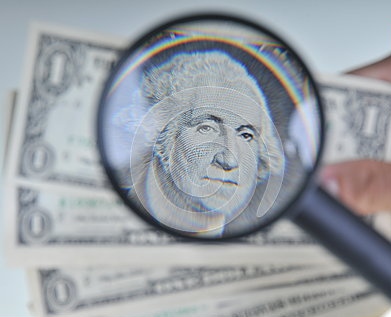
1) Identify tactile clues in banknotes
One of the most distinctive features of the American banknote is the texture of the paper used to print the currency on. This special paper is made of 75% cotton / 25% linen blend that is uniquely manufactured for the government’s sole use. As a result of this, it can be one of the most important aspects of detecting a counterfeit bill. This blend was specifically created for durability, so if the texture of the bill is at all dissimilar, this can be an indicator to take a closer look at the item. The cotton and linen blend is the reason that money can withstand an accidental trip through the washing machine.
The printing process used on banknotes is called Intaglio Printing. In this method of printing, engraved plates emboss the paper with ink providing the distinctive raised texture of the image. This printing process is highly specialized and quite expensive, which makes it difficult to properly duplicate. A simple and discreet method of testing the quality of the ink is to run a fingernail over detail on the portrait. There is significant detail in the shirt collar, so it is easy to determine if there is a textural difference on the printed image.
Currency Details
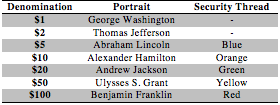
2) Identify visual indicators in banknotes
There are a number of visual indicators in a counterfeit banknote, some of which are more noticeable than others.
- While there are larger bills in existence, they are mainly in the hands of collectors since the $100 has been the largest denomination in circulation since 1969.
- It is important to know which individual is on each bill. Yes, this seems rudimentary, but one would be surprised with what criminals will try to get away with.
- There are red and blue rayon microfibers that are embedded into the paper stock that is used for the currency. This can be one of the best indicators on older currency that does not have additional security features.
- No images or writing should ever be smudged, distorted or running in any manner. Images should be clear and crisp.
- Series 1996 bills to present will have a watermark that matches the portrait on the bill.
- Series 1996 and newer bills have color shifting ink, which is specific to each bill.
- Bills larger than $5 have a security thread hidden inside that glows a specific color (see table) when placed underneath a black light. Newer bills also have the numeric and written amount on the security thread.
Micro printing appears as a solid line to the human eye, but upon closer examination is made up of smaller images. This proves to be quite difficult to duplicate because of the intricacy of the images is hard to duplicate without proper equipment. Close inspection with a magnifying glass can prove to be helpful in seeing micro printing.
3) Identify olfactory indicators in banknotes
One of the methods that criminals use to counterfeit money is to change the denomination of the bill. In order to do this, criminals use heavy-duty chemicals in order to strip off the ink and images on the bill so that they are left with a blank banknote. This process leaves the bill with a washed-out texture and often results in a bill that reeks of chemicals and unnatural odors. Any unusual smell on a banknote should be an indication to stay vigilant in looking for signs of counterfeiting.
4) Identify best practices to positively verify banknotes
One of the most vital tools in detecting a counterfeit bill is a black light. Placing a bill underneath a black light will illuminate the security thread in the bill and make the image much more vivid. This will help to determine if the security thread matches the denomination, in addition to determining the crispness of the images printed.
A common misnomer is the use of currency pens to test the validity of the bill. While this does check if the paper is good, it does not check the bill itself to determine if it has been altered in any way. For this reason, it is a good idea to always employ more than one strategy when trying to determine the status of a banknote. The more exposure and training available, the more comfortable an individual will be in recognizing counterfeit currency.
Counterfeit Detector Pen
What to do if you encounter counterfeit currency...
If you should have the unfortunate fate of encountering a fake bill, here is my advice; DO NOT TAKE IT TO YOUR BANK. Trust me, you will be disappointed.
Once the bill has been positively identified as a counterfeit, the bank is obligated to turn it in to the U.S. Secret Service. Yes, I did say Secret Service! Here's a fun fact: one of the Secret Service's initial assignments was to help with the problem with counterfeit currency in Revolutionary times. To this day, they are still in charge of that task.
If you do have a counterfeit bill, you can find the instructions from the secret service website on how to forward the bill to the Secret Service yourself and do your due diligence to take counterfeits out of circulation!
Additional Resources
- Counterfeit Note Report Form
If you do come across a counterfeit bill, use this form to submit your finding to the Secret Service


